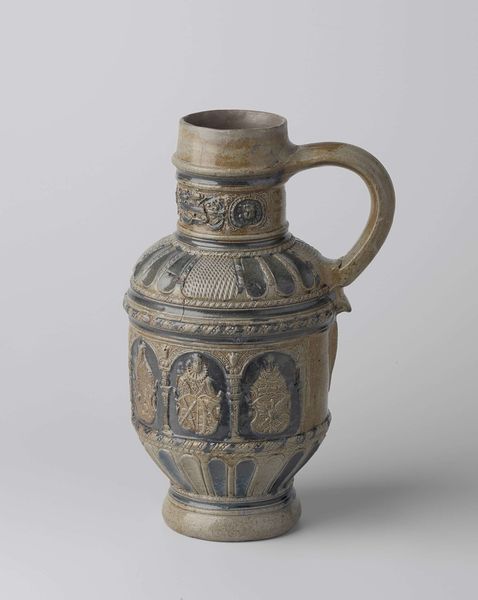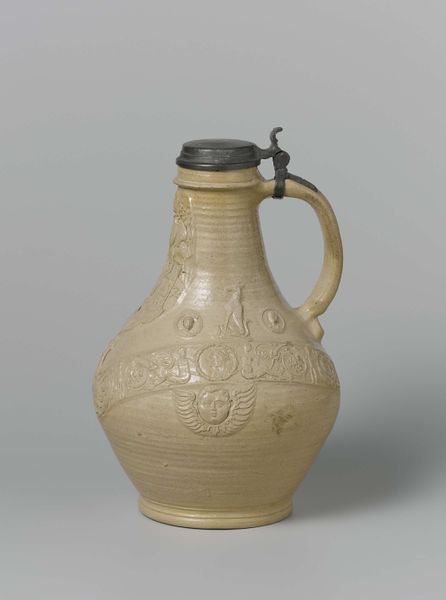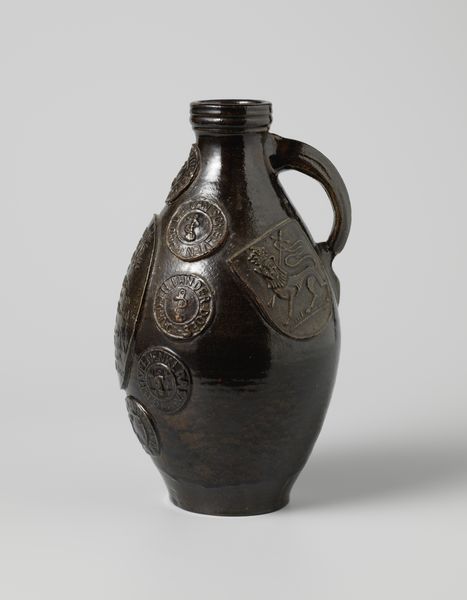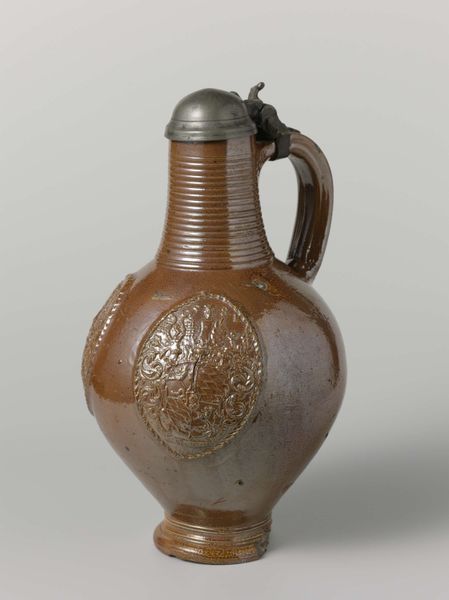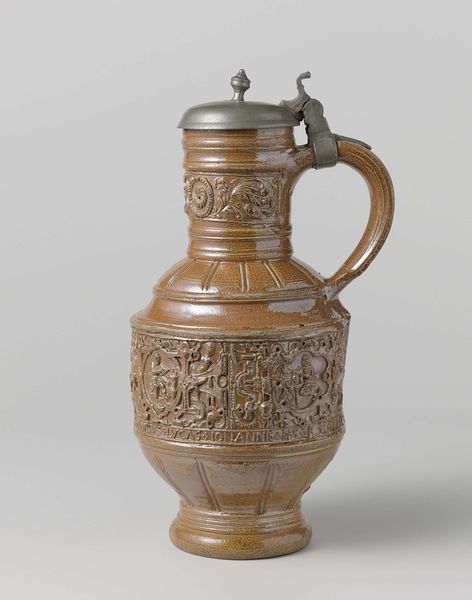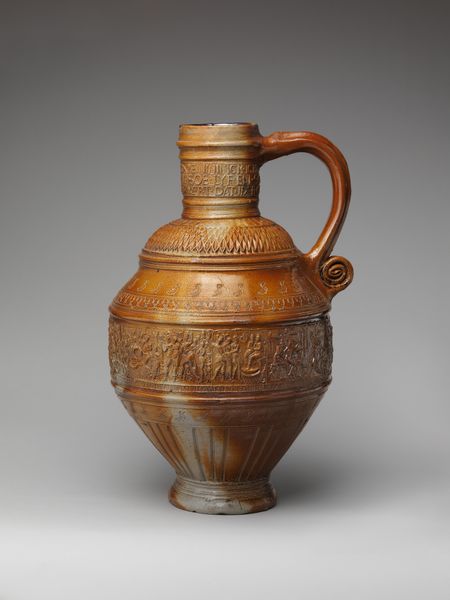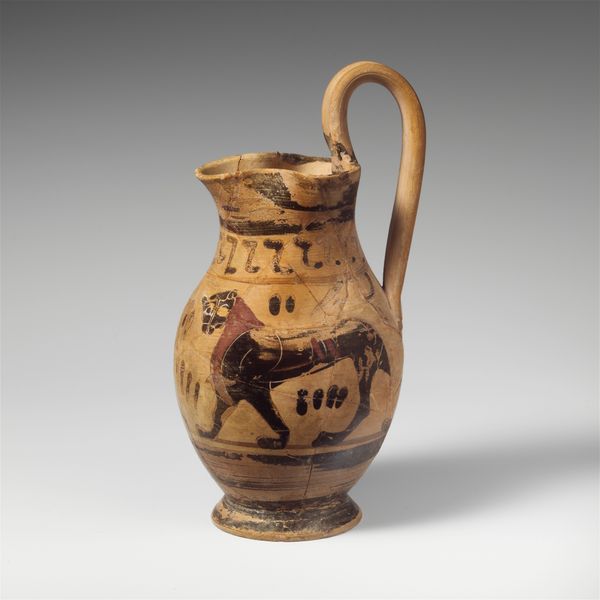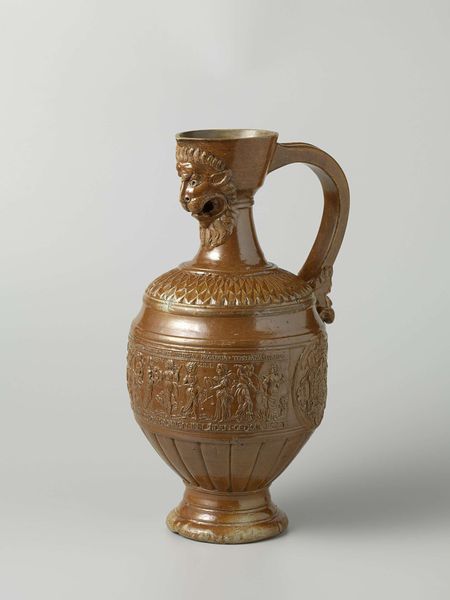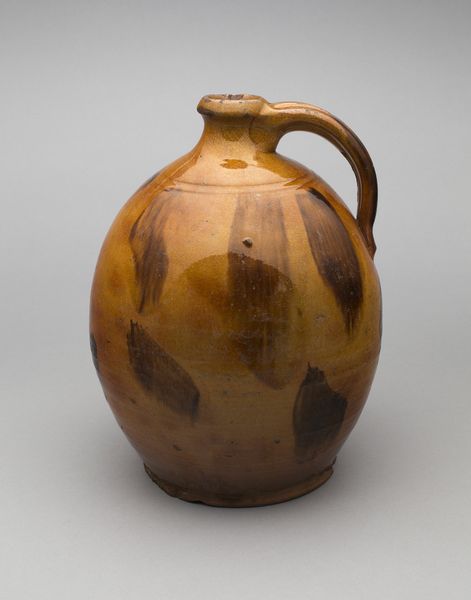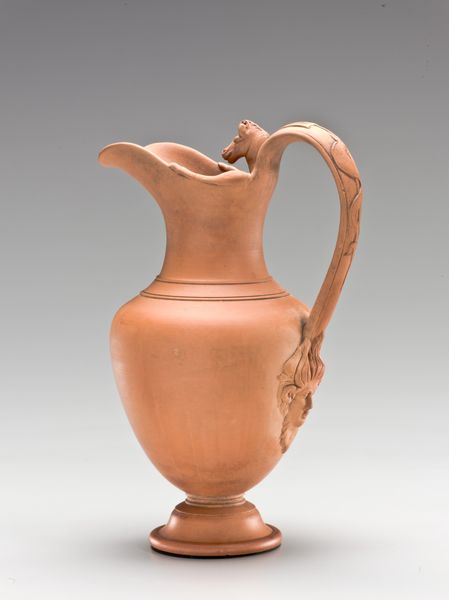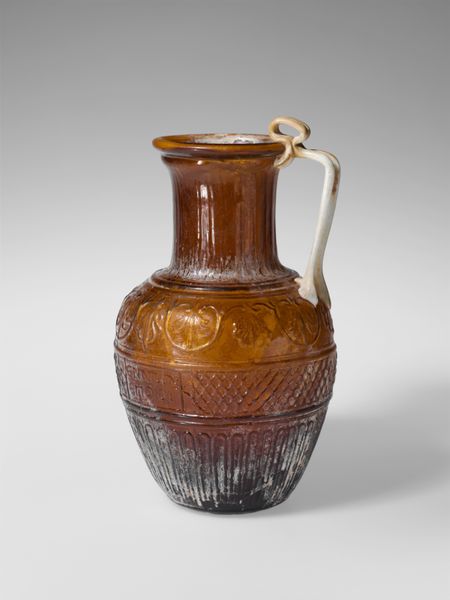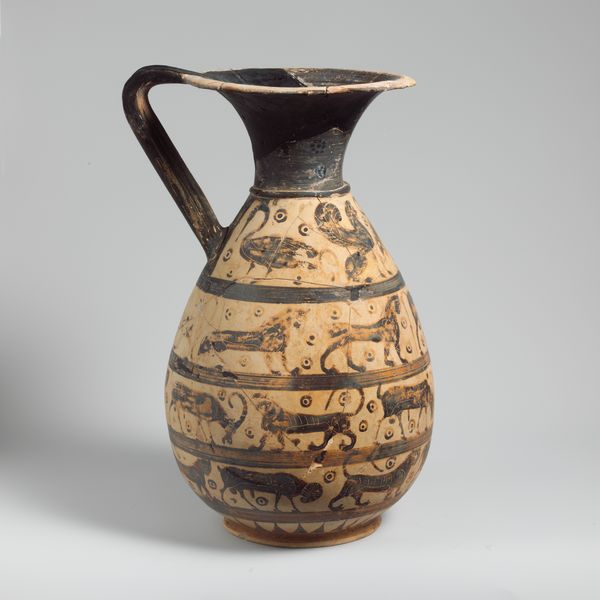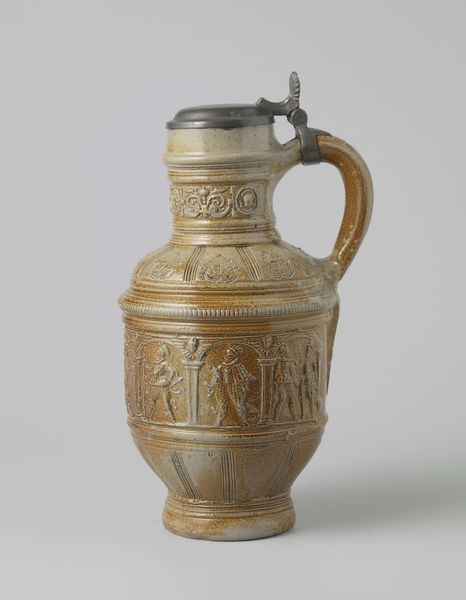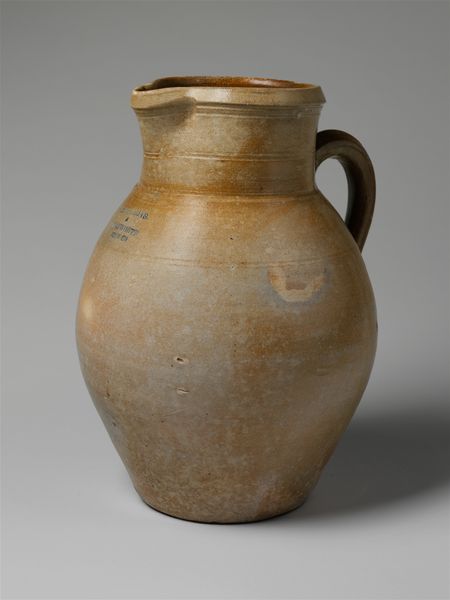
relief, ceramic, earthenware
#
medieval
#
relief
#
ceramic
#
figuration
#
earthenware
#
stoneware
#
ceramic
Dimensions: height 25.8 cm, diameter 7.5 cm, diameter 15 cm, diameter 7 cm, width 16.7 cm
Copyright: Rijks Museum: Open Domain
This salt-glazed jug with three handles was made in Germany by Baldem Mennicken in the late 16th century. What does it mean to place Lady Justice, a symbol of civic order, on a humble object like a jug? The answer lies in the socio-political context of the time. Mennicken lived and worked during the Reformation, a period of immense religious and political upheaval. The image of Lady Justice, often found on town halls and legal documents, was a potent symbol of civic identity and the rule of law. By placing it on a jug, Mennicken brought this symbol into the domestic sphere, suggesting that the values of justice and order should permeate everyday life. To understand this artwork fully, we can consult historical documents, legal records, and studies of the Reformation to explore the meanings of Lady Justice. Artworks are contingent on the social and institutional contexts in which they were made.
Comments
No comments
Be the first to comment and join the conversation on the ultimate creative platform.
